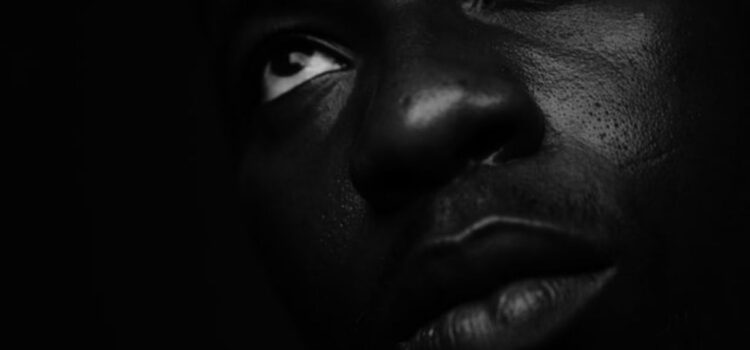

This article is an excerpt from the Shortform book guide to "Caste" by Isabel Wilkerson. Shortform has the world's best summaries and analyses of books you should be reading.
Like this article? Sign up for a free trial here .
What is the history of racial segregation? How did the dominant caste use skin color as a tool to stratify society and justify different living standards?
According to Isabel Wilkerson, the author of Caste: The Origins of Our Discontents, one of the ways racial segregation is upheld and justified is through the narrative of the purity of blood. The concept of pure vs tainted blood created restrictions around who is allowed into the dominant caste.
Read about the history of racial segregation.
Racial Segregation
For all the other tenets of a caste system to be upheld, the dominant caste must define their race in an irreproachable way and safeguard that definition at all costs. The easiest way to create this unassailable distinction is through the purity of one’s blood. The concept of pure versus tainted blood created restrictions around who was allowed into the dominant caste, but the idea also translated into the purity of a person’s skin. The dominant caste went to great lengths to restrict contamination via skin-to-skin contact.
In India, the Untouchables had to keep a certain number of feet away from the dominant caste. Some were required to wear bells to alert the Brahmin of their proximity. If a Brahmin accidentally touched something previously touched by an Untouchable, they performed cleansing rituals to purify themselves. Likewise, Nazis banned Jews from using public pools and beaches. And segregation in America kept black Americans isolated from the dominant caste in almost every facet of life.
Purity of Blood
The dominant caste in America faced increasing difficulties in keeping their Anglo-Saxon bloodline pure as more and more European immigrants came to American shores. The story of Noah and Ham laid the groundwork for enslaving and later segregating dark-skinned people from the light-skinned people. But the influx of light-skinned people from other European communities created a crisis.
To address this crisis, Congress passed laws in 1790 to restrict American citizenship to “free white persons.” This law required a succinct definition of what it meant to be white to differentiate between pure Anglo-Saxon white and Irish, Italian, German, and French white.
Another pressing issue was the inconvenient fact that Asians had whiter skin than “whites.” Congress passed more stringent immigration laws, such as the 1882 Chinese Exclusion Act, which banned Chinese immigration into western states. Then, Congress created the 1924 Immigration Act, which set quotas on how many immigrants were allowed in from places outside of western Europe.
The distinctions of whiteness became so rigid that a black man was actually saved from certain death in 1922 after being arrested for living as the husband of a white woman. When the judge discovered she was Italian, he overturned the conviction.
To further delineate between “real white” and “white-looking,” state governments turned to racial segregation within the subordinate caste. Arkansas initially defined “black” as anyone who visibly represented the subordinate caste, but they changed the definition to anyone with even one drop of African blood, the same definition used in Alabama. Even as recently as 30 years ago, Louisiana defined black as anyone 3.13% (1/32) black. In fact, Louisiana created an entire menu of conditions to designate subcastes. The rankings went from 100% black all the way down to 1.56% (1/64) black. Many people in the lower-tiered groups are considered white by today’s standards.
You only need to look at the difference in how South Africa approached the mixed-race population to understand how truly American these distinctions were and how they served the dominant caste. During apartheid, South Africa designated a new race of people to account for race mixing. The government grouped people with both African and European ancestry into a race called colored, and this group enjoyed greater freedoms than those who were of full African origin. This strategy served the whites in South Africa because they were outnumbered and needed to grow their numbers to maintain power.
In contrast, the dominant caste majority in America had no need to grow their population. Therefore, keeping only those with 100% pure Anglo blood at the top ensured their continued supremacy.
The Desire to Remain Untainted
Racial segregation in the United States was all-encompassing in the early centuries and well into the 20th century. Black children used different textbooks than white children, and schools kept the books in different locations to avoid contamination. Hospitals, buses, railcars, restaurants, and stores either kept separate quarters for black residents or banned them altogether. Department stores prohibited black people from trying on clothes.
The U.S. Supreme Court upheld the constitutionality of racial segregation in 1896, in a case in which a black New Orleans man refused to move from the whites-only car on a train. The man, Homer Plessy, was working in conjunction with a committee of black citizens to get Louisiana’s 1890 separation laws overturned. On June 7, 1892, Plessy, a shoemaker who passed as white but didn’t meet purity definitions, bought a first-class ticket on the East Louisiana Railway. When the train conductor asked him to move, he remained seated and was arrested.
The case, Plessy v. Ferguson, went all the way to the Supreme Court, which ruled in favor of Louisiana. The decision set forth a new mandate, known as “separate but equal,” which legitimized segregation under the guise that equal facilities would be provided to the lowest caste. This mandate became ingrained in American culture and stayed that way for the next 70 years.
A Fear of Polluted Waters
By the turn of the 20th century, whites believed so strongly in the noxiousness of black skin that there was almost nowhere a black person could swim in public waters. Like the Nazis had with the Jews, black Americans were banned from beaches, lakes, and pools across the country. If they were permitted, it was at off hours or in barricaded areas to keep their polluted waters away from the pristine waters of the dominant caste.
In 1919, white swimmers stoned a 17-year-old black boy until he drowned after he drifted over the invisible barrier to the whites-only section of Lake Michigan. In 1949, St. Louis opened the largest public pool in the country. City officials at first allowed black residents to use the pool, but the first day they tried to enter the pool, a mob with weapons surrounded them. Nearly 5,000 members of the dominant caste tormented and beat everyone from black children to innocent bystanders in proximity to the pool, including a black man on his front porch next door.
In 1951, a Youngstown, Ohio Little League team decided to celebrate their championship win at the local pool. The lifeguard denied entrance to the one black player, Al Bright, who had to sit on a blanket outside the fence and watch his teammates celebrate without him. After an hour of persisting by the coaches, the lifeguard finally agreed to let the boy in with restrictions. While everyone else watched, Al took one lap around the pool in a raft pushed by the lifeguard, who warned him not to touch the water. When his lap was up, he went back behind the fence.
The Lasting Effects of Racial Segregation Laws
Racial segregation laws enabled the dominant caste to keep their system fixed and justify measures taken to exclude others from their constitutional rights. The Immigration Act made it easy for the dominant caste to strip those who were not “free white persons” of citizenship. This lack of citizenship kept the middle castes from moving up because only citizens could achieve certain levels of economic success.
However, the measures that hindered advancement of the middle castes were doubled against the subordinate caste. The dominant caste relegated black Americans to a status below non-citizenship and even personhood. Blacks had to use back entrances for white establishments, couldn’t be outside after sundown, and couldn’t learn to read or write for decades. They couldn’t attend community celebrations and political events, and they were only allowed to take on the worst jobs. In forcing the subordinate caste to work dirty and abhorrent jobs, the dominant caste perpetuated their designation of blacks as dirty and abhorrent people.
These beliefs remained strong even after the Civil Rights Movement. One man, a member of the dominant caste who grew up in the South during the 1930s, moved north during the Civil Rights era to join the military. He struggled to adapt to interactions with black soldiers and work beside them as equals. If he had to shake a black man’s hand, he couldn’t stop his conditioning from causing him to recoil. And if he did shake a black man’s hand, he was always aware that his hand felt soiled. He came to understand the social conditioning of the South as a sort of madness poisoning all attempts at rational thought.

———End of Preview———
Like what you just read? Read the rest of the world's best book summary and analysis of Isabel Wilkerson's "Caste" at Shortform .
Here's what you'll find in our full Caste summary :
- How a racial caste system exists in America today
- How caste systems around the world are detrimental to everyone
- How the infrastructure of the racial hierarchy can be traced back hundreds of years






